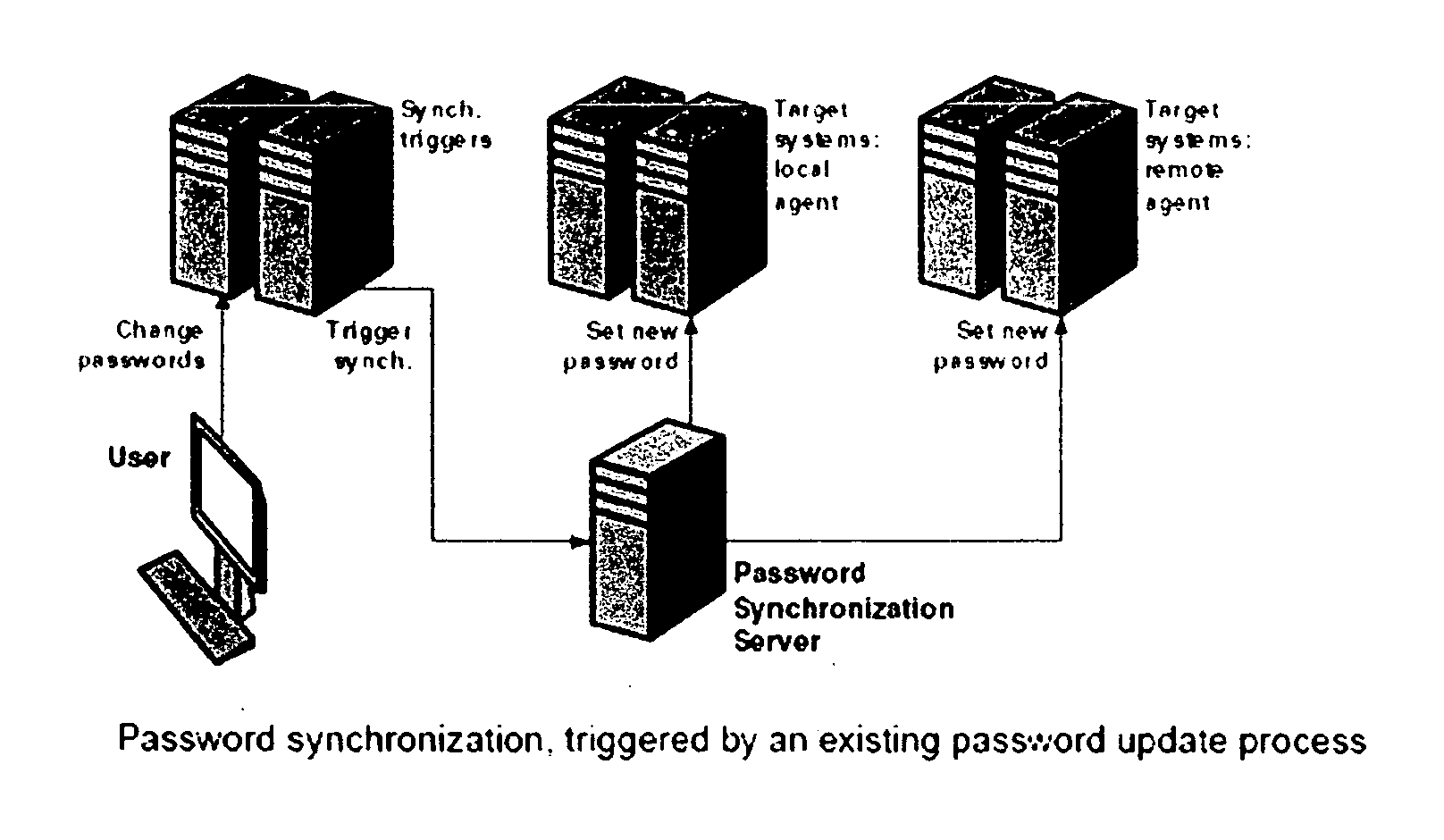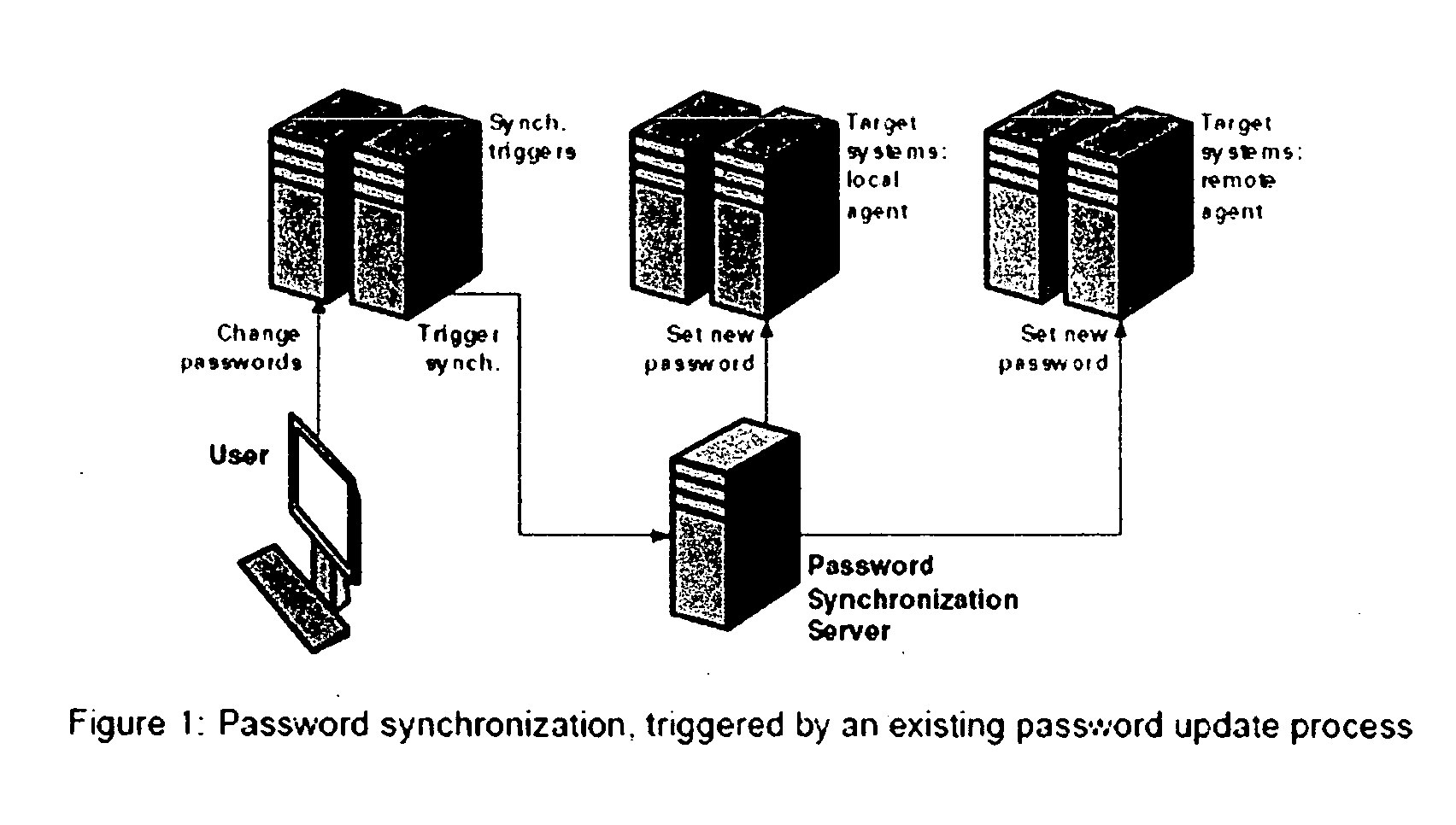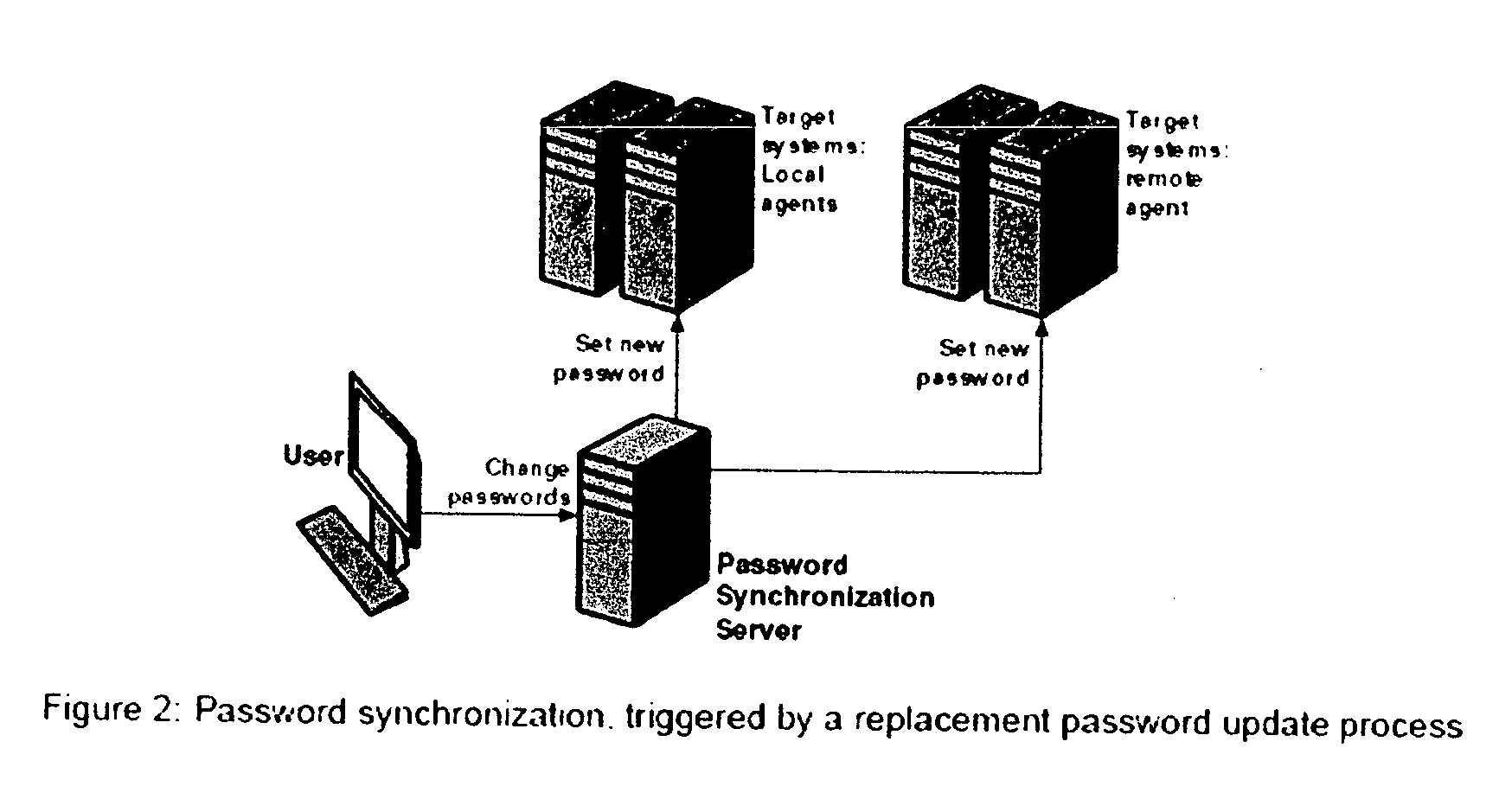Method for reduced signon, using password synchronization instead of a credential database and scripts
a password synchronization and credential database technology, applied in the field of reduced signon, can solve the problems of script program use costly development and maintenance, etc., and achieve the effect of reducing the number of signons to users, high availability, and cost-of-operation
- Summary
- Abstract
- Description
- Claims
- Application Information
AI Technical Summary
Benefits of technology
Problems solved by technology
Method used
Image
Examples
Embodiment Construction
—FIGS. 1, 2 AND 3
[0034] Definition. Managed System
[0035] A managed system may be a computer operating system, database or application where users access some features or data, and where user access must be controlled.
[0036] Definition: User
[0037] Users are people whose access to systems and identity information must be managed.
[0038] Definition: Authentication
[0039] Authentication is a process used by a system to uniquely identify a user. Most systems authenticate users by asking them to type a secret password. Other forms of authentication include: [0040] Using hardware tokens. [0041] Using a PKI certificate. [0042] Using a smart card. [0043] Providing a biometric sample (finger print, voice print, etc.) [0044] Answering personal questions.
[0045] Definition: Signon
[0046] The act of authentication is called a signon or sign-on. In the context of this document, a signon is generally understood to mean authentication using a login ID and secret password.
[0047] Definition: Redu...
PUM
 Login to View More
Login to View More Abstract
Description
Claims
Application Information
 Login to View More
Login to View More - R&D
- Intellectual Property
- Life Sciences
- Materials
- Tech Scout
- Unparalleled Data Quality
- Higher Quality Content
- 60% Fewer Hallucinations
Browse by: Latest US Patents, China's latest patents, Technical Efficacy Thesaurus, Application Domain, Technology Topic, Popular Technical Reports.
© 2025 PatSnap. All rights reserved.Legal|Privacy policy|Modern Slavery Act Transparency Statement|Sitemap|About US| Contact US: help@patsnap.com



